Demolition man: Peter Ward of Ward Demolition
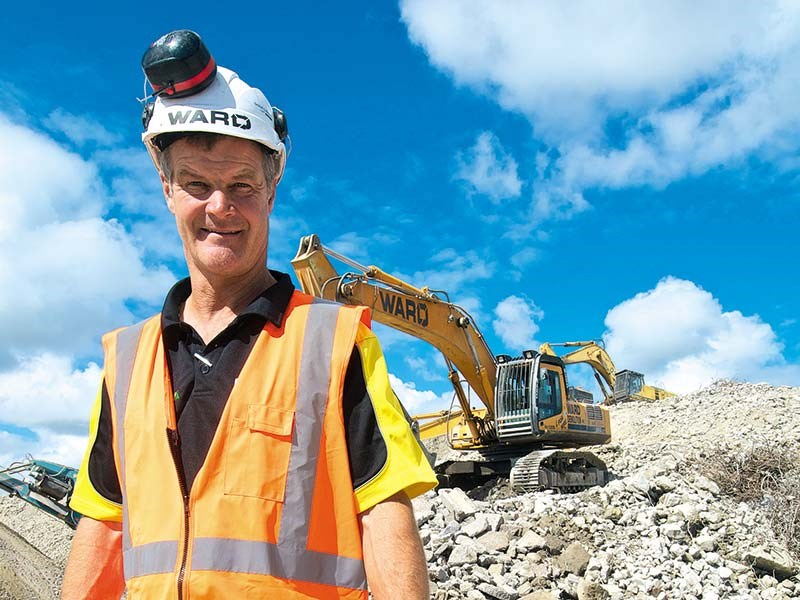 Peter Ward
Peter Ward

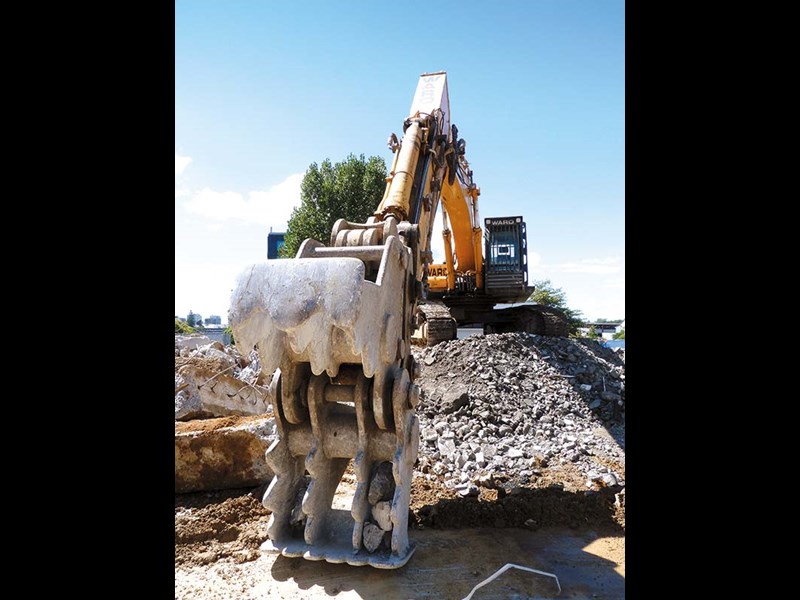


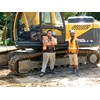



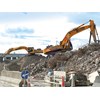

|
|
Peter Ward
|

|

|

|

|
In defining a ten-point comparison between the construction industry and the demolition business, some wiseacre once commented that the latter could easily be compared to participating in a high-stakes game in Las Vegas.
He went on to explain the analogy by stating that in construction you have defined information (plans) to base your calculations on, whereas in the demolition game you rarely have any such luxury, as the structure you're removing in most cases is many years old and any plans have long-since disappeared.
Having had an interest in the demolition process since helping my dad pull down a hundred year-old house in 1960, I booked an appointment with Peter Ward, managing director of Ward Demolition, to find out what it's really like being in the demolition industry.
Ward knows the business inside out. I guess he would do really, as it's been his life's work since he started the business as a 21 year-old back in 1987.
Recycled crushed concrete
As we sit down in the Ward Group boardroom, we look out on a stockpile of demolition concrete being systematically pulverised. It's then placed in a crusher to be turned into aggregates ranging from 20mm to 100mm grades for the company to sell at very competitive prices.
Sitting on top of the stockpile (which must be 15 metres-high) is a well-used Komatsu PC 650 fitted with a pulveriser. The machine is but one of 48 hydraulic excavators the company currently owns.
Ward ruefully remarks that the stockpile would be much smaller if roading engineers and the like didn't have an apparent aversion to the colour of the crushed concrete, as it would seem that they prefer the blue colour of conventional quarried rock.
He goes on to say that despite extensive tests carried out in Australia on RCC (recycled crushed concrete) which have scientifically calculated that the product has a strength and compaction capability of approximately 13 times that of quarried rock, there is still a resistance amongst the engineering fraternity to use it in New Zealand even though it's extremely competitively priced when comparing it to conventional materials.
Ward Group has also commissioned an Auckland company, Pavespec, to carry out comprehensive repeated load triaxial (RLT) tests which have produced similar documented results.
An added advantage to using RCC in applications such as construction of roads, footpaths and bedding material that shouldn't go without noting is that a certain amount of residual cement remains in the crushed aggregate, providing additional binding properties that are not present in natural aggregates.
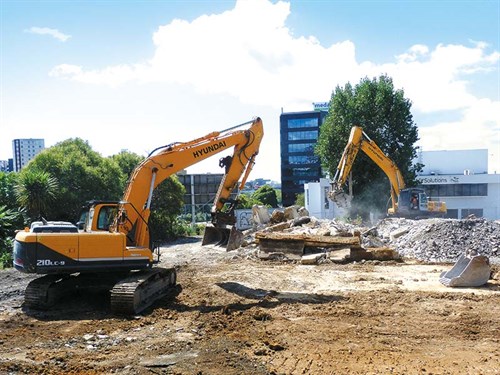
Demolition gear
Donning the appropriate PPE and walking out into the extensive yard, the stockpile takes on a new dimension, making 50-tonne machines look like matchbox toys and it's hard to believe that such a large operation could have started out with a couple of machines and a few hand tools.
The preferred brands of excavator in the Ward stable are Hyundai and Komatsu, while there are a few Bobcat wheeled skid steers in the mix as well.
It's apparent that the demolition business is extremely hard on equipment.
This is evidenced by a machine's bucket being repaired in the workshop which is constructed of what looks to be 20mm-thick steel but nonetheless is having parts of it replaced due to the fact that it had worn paper-thin.
Demo work
After getting a few shots of some of the equipment, along with a Ward flagship T904 Kenworth, it's time to set out to take a look at some current jobs the company is working on.
Back in 2014 Ward Demolition won the Urban Demolition Award at the World Demolition Awards in Amsterdam for its technical expertise in deconstructing the old laboratory which was full of asbestos and even housed some radio active material.
Ward Group took out the award against stiff competition from the USA, England and India. However, Peter Ward humbly accredits a majority of their success to the "incredible collaboration between the main contractor, Fletcher Construction and the Ward team".
Ward's phone rings incessantly and it's plain to see that the man literally loves what he does, always speaking in a calm and friendly manner, no matter how many questions are flung at him.
We visit the first site on our trip around town, it's a job that appears to be almost completed from a demolition point of view, apparently it used to be an old auction house of only two storeys but still sports the remains of a lift well that looks like it had been extracted in very much the same way as a dentist would remove a tooth.
An adjacent building has some reinforcing bar still protruding from its wall, emphasising the care that is needed in detaching an unwanted building from one that's still operational.
Next stop is the site of the old Grafton Oaks hotel at the top of Grafton Road, across the way from Auckland Hospital.
By the time we get there, the only thing remaining is the stairway up to the old front door, which provides me with one last opportunity to walk up the steps I've trodden many moons ago, full of anticipation of dinner with my latest date.
I caught up with a couple of Ward's workers, Hawera Matiu and Temple Moon who have been working on the current site for about three weeks.
Both the guys say that they love their jobs at Ward Demo, as they don't ever get bored with going to the same workplace for long periods of time and you get to work on lots of different machines the said.
Read the full article in issue #258 of Deals on Wheels magazine. Subscribe here.
Keep up to date in the industry by signing up to Deals on Wheels' free newsletter or liking us on Facebook.



